- | 2:00 pm
3 ways car design is about to change forever, according to Ford
Anthony Lo, Ford’s new Chief Design Officer, explains where cars are going next: an upgradeable, aerodynamic living room on wheels.
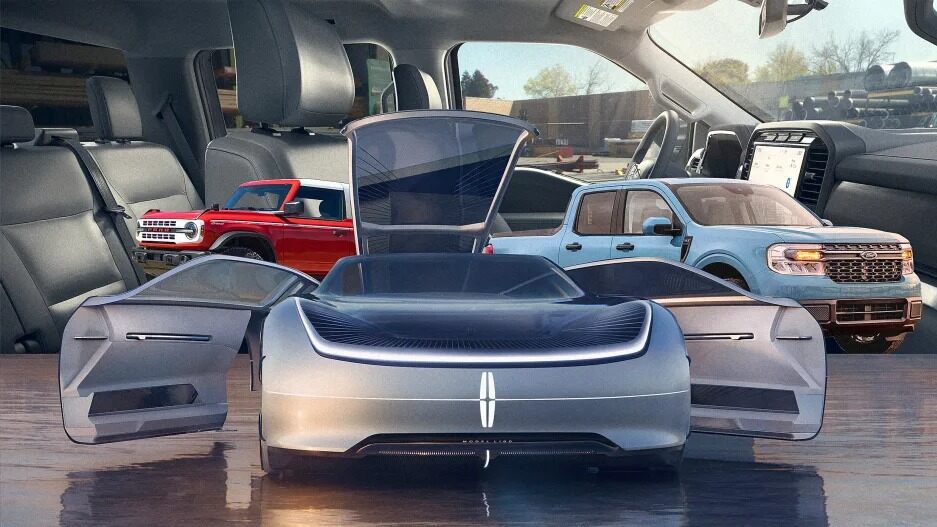
Electric. Self-driving. Rugged. Efficient. The car industry is amid a massive transformation, as brands transition their lineups from traditional cars powered by combustion engines to a new wave of sensor-loaded, digital vehicles. Gone are the days when automatic transmissions, power windows, and traction control marked the height of progress. We are headed to new car designs like we’ve never seen before.
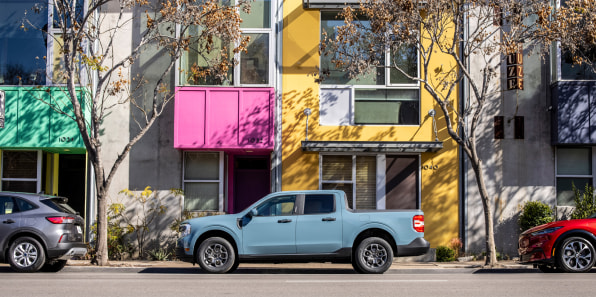
While Ford was certainly not the first company to acknowledge this shift, it has raced to catch up. As of 2018, the company announced its plan to stop making cars for the U.S. market altogether, and focus on trucks and crossovers—which led to hit products including the electric Ford F-150 Lightning, the Maverick hybrid pickup that’s built to park on city streets, and a line of Broncos that are customizable as much around lifestyle as performance specs (right down to the option for a waterproof interior that you can hose right off instead of vacuuming).
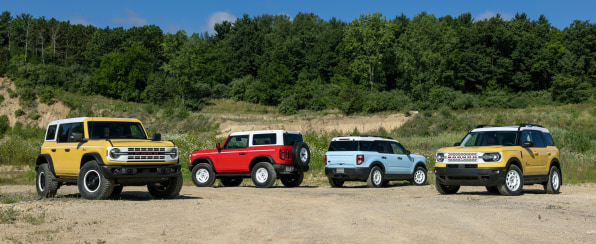
Then last year, Ford announced its new chief design officer, Anthony Lo, an industry veteran who led exterior design at the French company Renault where he worked on a fleet of vehicles including the 2021 Captur, a sporty, eco-conscious “supermini” crossover that became the top best-selling vehicle in its category across Europe.You can see Lo’s point-of-view in the first concept car he’s overseen at the company, the Lincoln Model L100—an electric car with two-thirds the footprint of a limousine, that blooms open like a flower to let you in.

With a year of assimilation into the Ford machine under his belt, Lo and I talked about the biggest changes that consumers should expect coming to both Ford and the car industry at large.“Because of the changes in the industry: electrification, connectivity, and all the software driven innovations. . . we have to shift our focus to how customers are interacting with our vehicles,” says Lo. “We need to attract our customers more or less. . . [by] having the best interface, the best touch points for customers to interact with our brand. And the main thing: an exterior design that attracts them to go to a showroom or for a test drive.”

UPGRADES TO EVERYTHING, EVEN THE UPHOLSTERY
Of all the changes coming to cars over the next few years, Lo says the biggest change he sees is “post-purchase,” noting, “Before you picked up the key and said goodbye,” he says. “But now, I think we need to interact with our customers . . . with new features that you can introduce over the life cycle of the vehicle, and vehicles will become smarter—like smartphones—as you own them.”
Lo isn’t the first person to suggest upgrading in-car software through over-the-air updates (after all, Tesla has used the strategy for years). However, the underlying logic behind the updates will have larger repercussions across Ford’s design. Electric cars last longer than gas ones, he points out, and thanks to fewer moving parts, people expect electric cars to reach 200,000 miles regularly. Over-the-air updates to a car’s software will be necessary simply to follow the evolution of technology over a potential decade or more of ownership. But even more than that, consumers need other kinds of updates to stay in love with their car—which also happens to be a potential revenue stream for Ford.
“If you imagine vehicles having a longer life, then at some point . . . you may want to introduce a new interior layout, [or] a new material you can actually put into the vehicles to update [them], like a freshening,” says Lo, pointing out that this strategy is just “like your house you may want to refresh three, four, or five years after [you’ve] owned it.”
I picture swapping out a driver’s seat that never fit my back quite right, or changing the upholstery to a fresh, fashionable color. Of course these tricks are technically possible today, but they are aftermarket decisions, generally not endorsed (or under warranty) by the manufacturer. Meanwhile, Lo imagines designing the entire car to be easily updatable. It’s the impulse to redo your kitchen, but with click-in components, and on wheels.
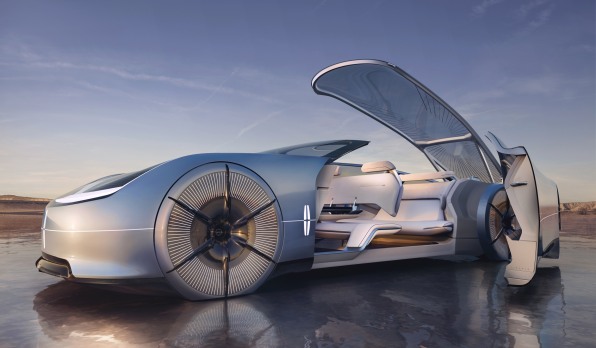
A FOCUS ON MORE LUXURIOUS “PASSIVE CAR TIME”
The experience of driving a car is about a lot more than driving, especially following the pandemic. Ford’s research shows people are spending more time in their cars not driving them, but working and eating, because the pandemic taught us to live life in the socially distanced cocoon of our vehicles. And electric platforms will likely support these trends, as electric cars can provide power inside and outside the cabin without burning gas or putting out exhaust.
“If you’re waiting at a charging station, or you’re at a campsite, what can you do inside a car?” Lo asks. This is what Ford calls “passive car time,” and cars need to be designed with this priority to accommodate our new behaviors.
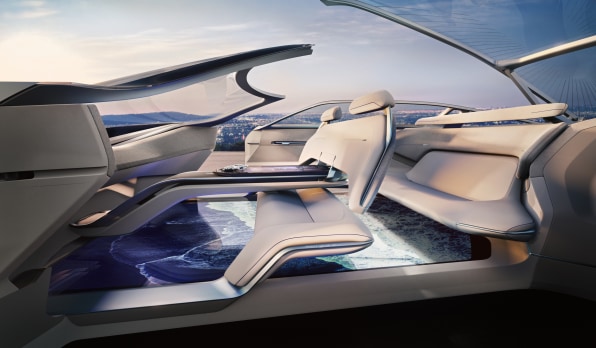
Some of Lo’s early thoughts on how Ford might tap the trend toward passive car time can be seen in his aforementioned Lincoln concept. A screen embedded in the floor would use rich motion graphics to create an otherworldly ambiance, akin to the waves washing underneath your feet. Seats would turn toward one another so people can talk or play a game. And the interface itself would feel tangible rather than one big screen you tap—thanks to a navigation system that’s you’d play like a board game to navigate. You’d place a small car “chess piece” where you want it to drive next, rather than fumbling with Google Maps.
Perhaps a chess piece isn’t the most efficient means to go from a to b, but Lo views these physical experiences as essential to relaxing inside a car rather than worrying about its functions—so that your passive time is as comfortable as possible.
AERODYNAMICS BEYOND EVERYTHING ELSE
As for the exterior design of Ford’s line, Lo has little interest in messing with the Built Ford Tough aesthetic of trucks like the F-150 with its big grill and distinct design language that’s made it a top seller in the U.S. for decades. He recognizes their specific appeal to a loyal audience.
However, electric systems are bound to reshape how cars look—and aggressively so. “I think it’s been an emerging trend for a while. In the past, with [combustion engines], you were tasked with being aerodynamic for fuel efficiency,” says Lo. “For [electric], I think you need to be even more aerodynamic because it will increase your range.”
Lo suggests that with the right aerodynamic design, he can add 30 to 40 miles of range to an electric vehicle—eliminating some of the range anxiety that plagues people about electric cars, while potentially allowing a car to carry a smaller battery (making it lighter, more energy efficient, and cheaper).
Aerodynamics might not sound like a very big change considering that cars are already aerodynamically tested, but as designers prioritize this metric above others, Lo suggests the updates we actually see will be profound.
“Exterior design used to be a singular expression of a designer…but now when you’re thinking about something that we’ll primarily want to be very technically advanced, you have to [prioritize] it differently,” says Lo. “Like you’d see an old race car from the ’50s, you have these shapes—covered wheels and a super sleek aerodynamic tapered body—[but] it’s beautiful at the same time.”
In other words, Lo is packaging the car of the future as a 1950s-style, electric-powered, living room on wheels. Sounds pretty tempting, so long as we make more room for pedestrians and fund more public transit, too.





































